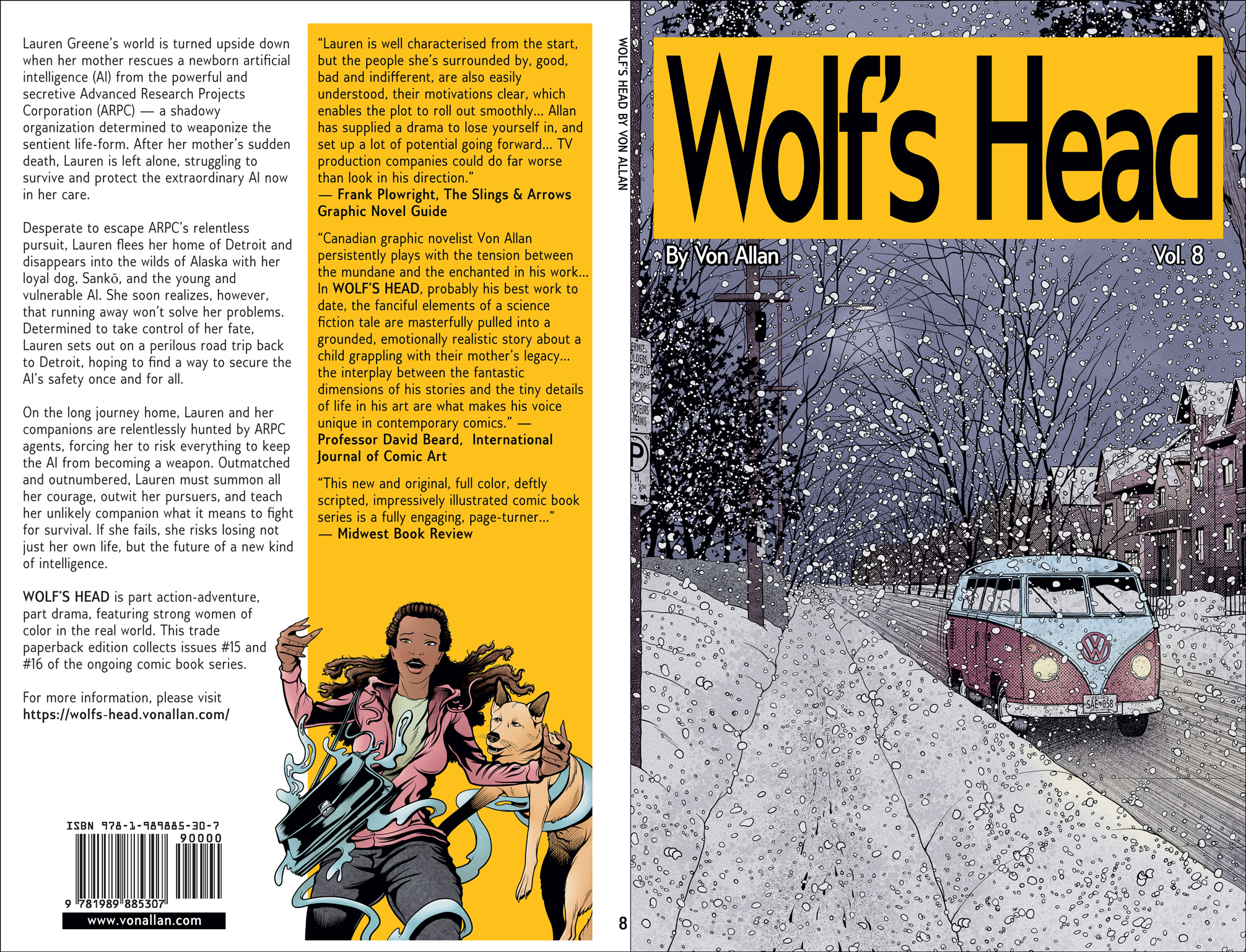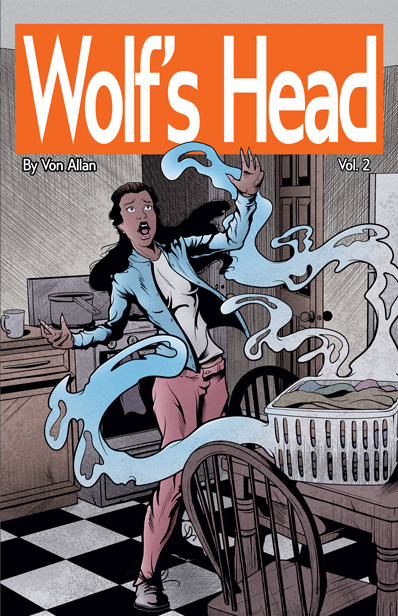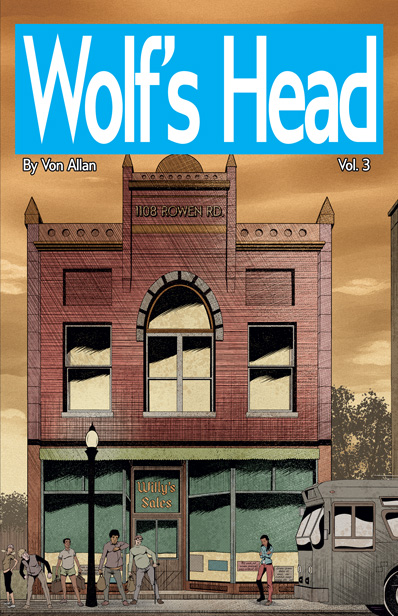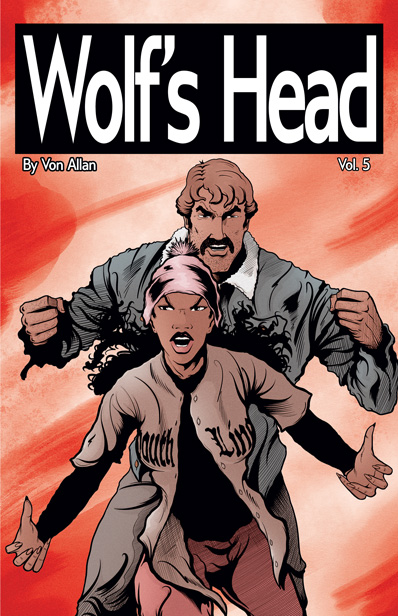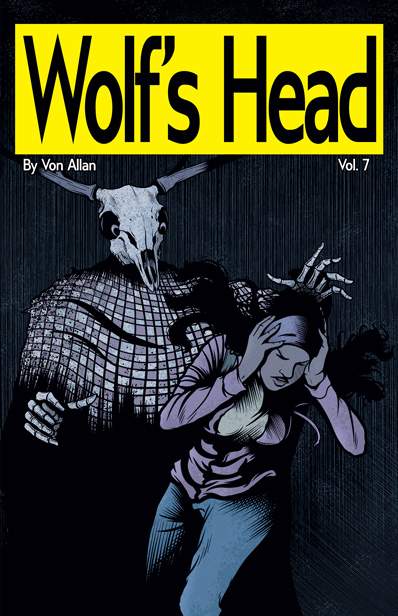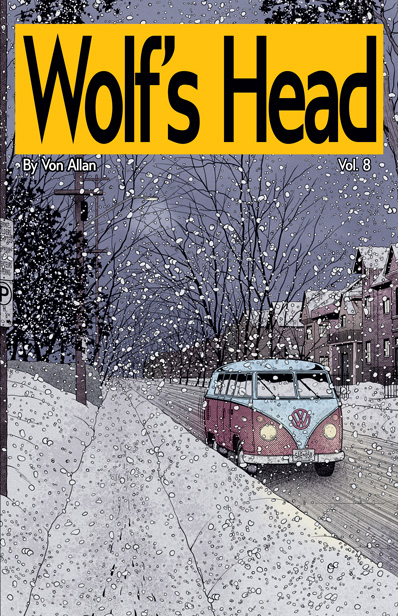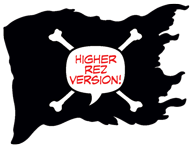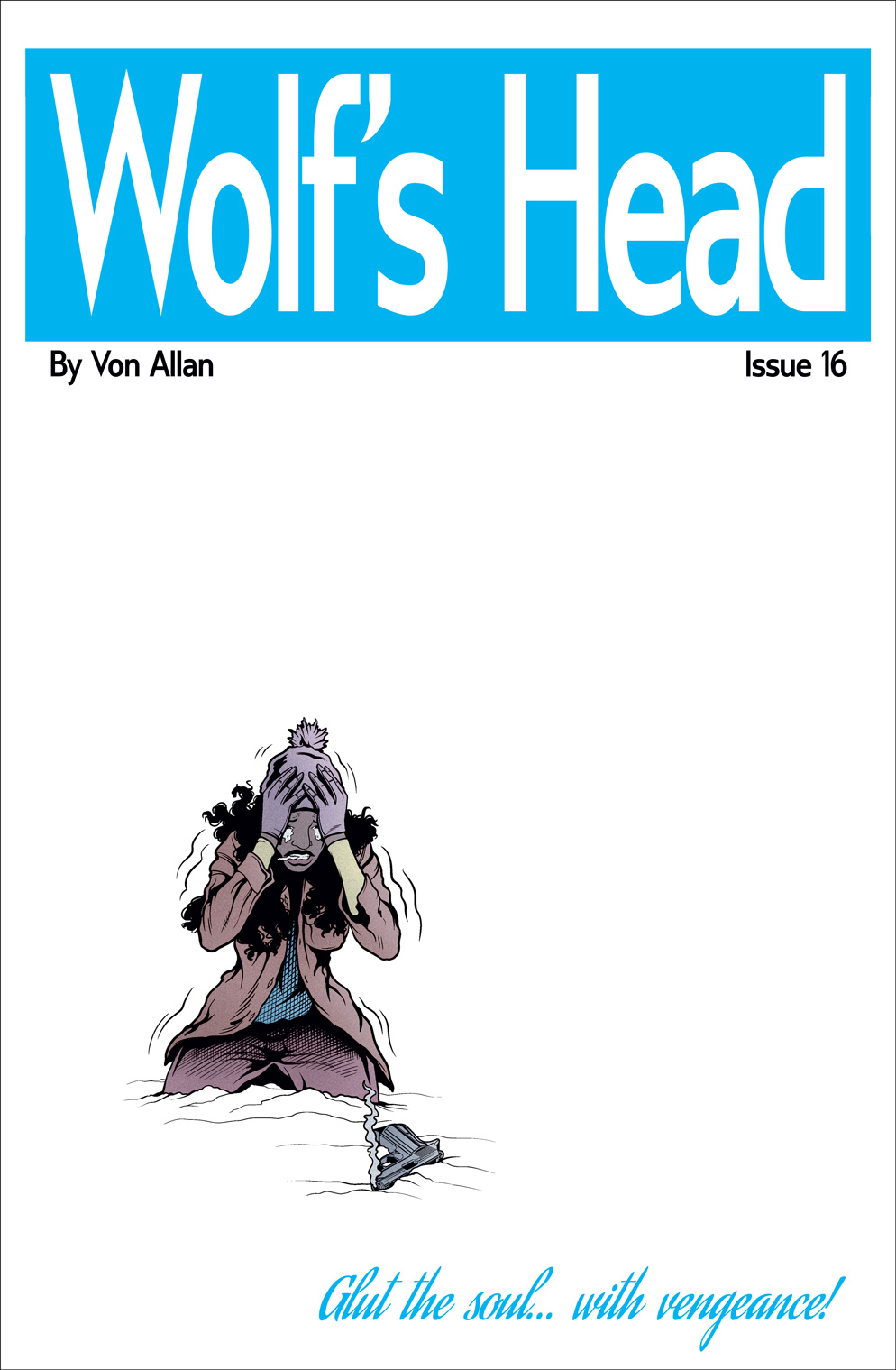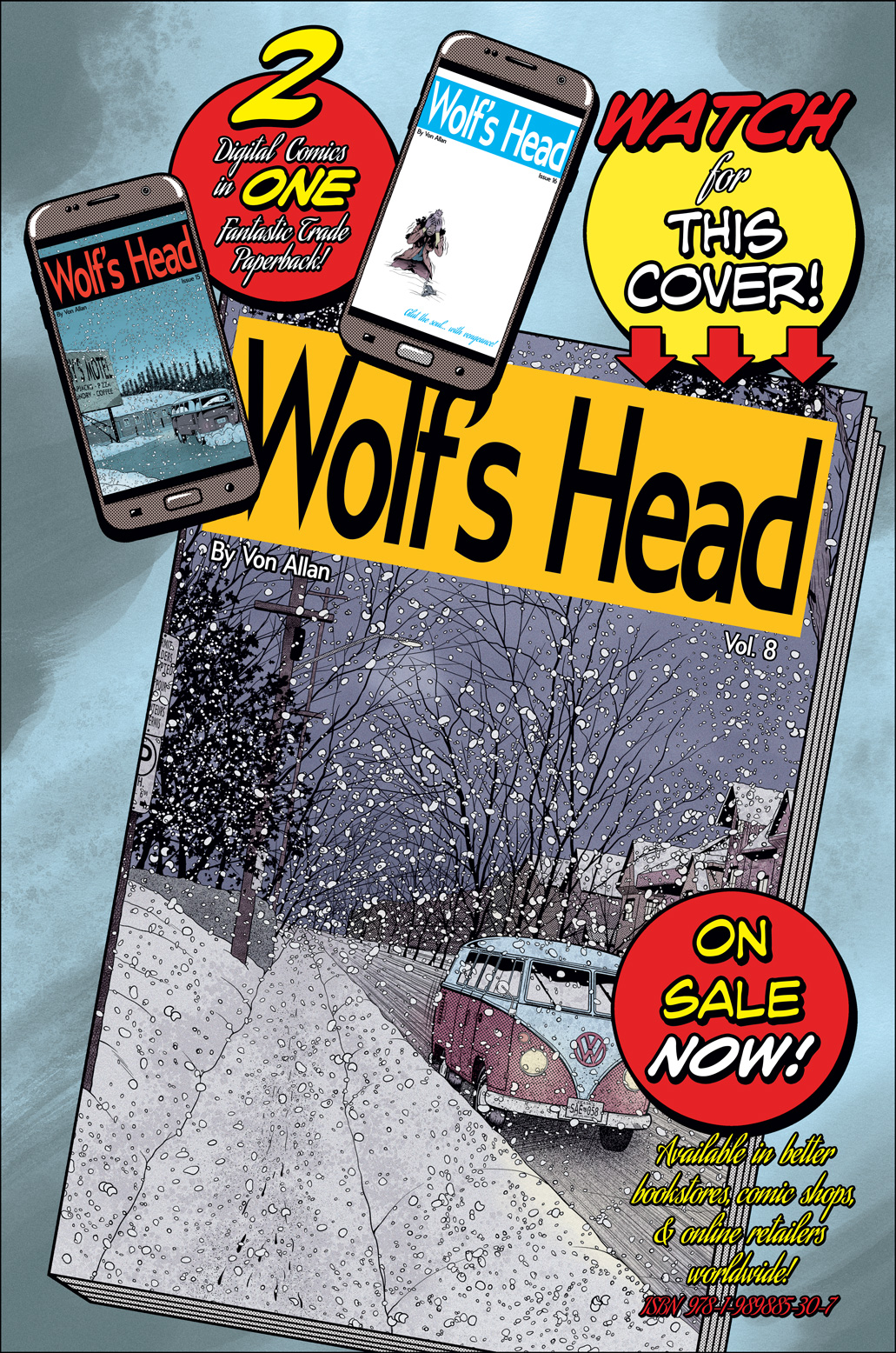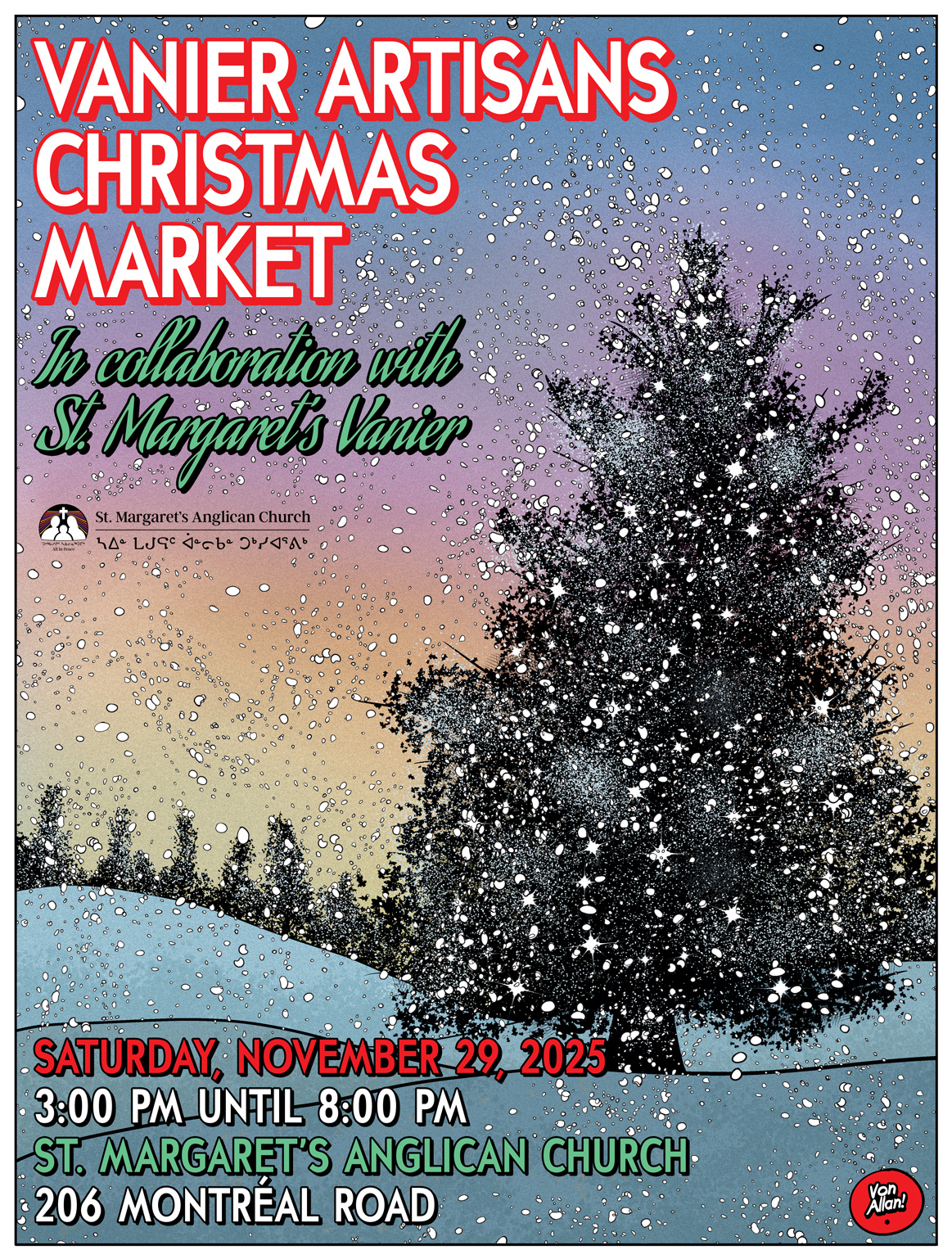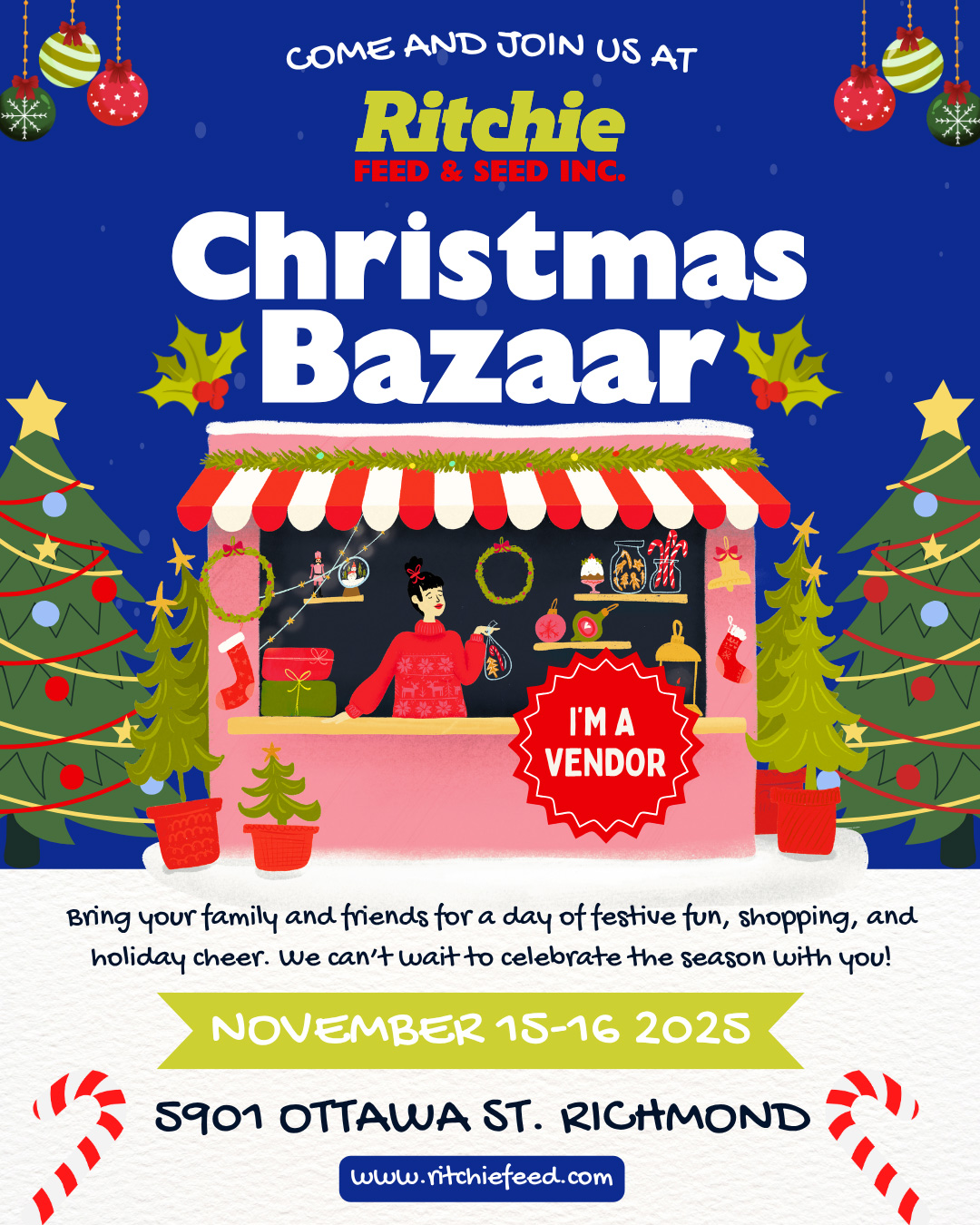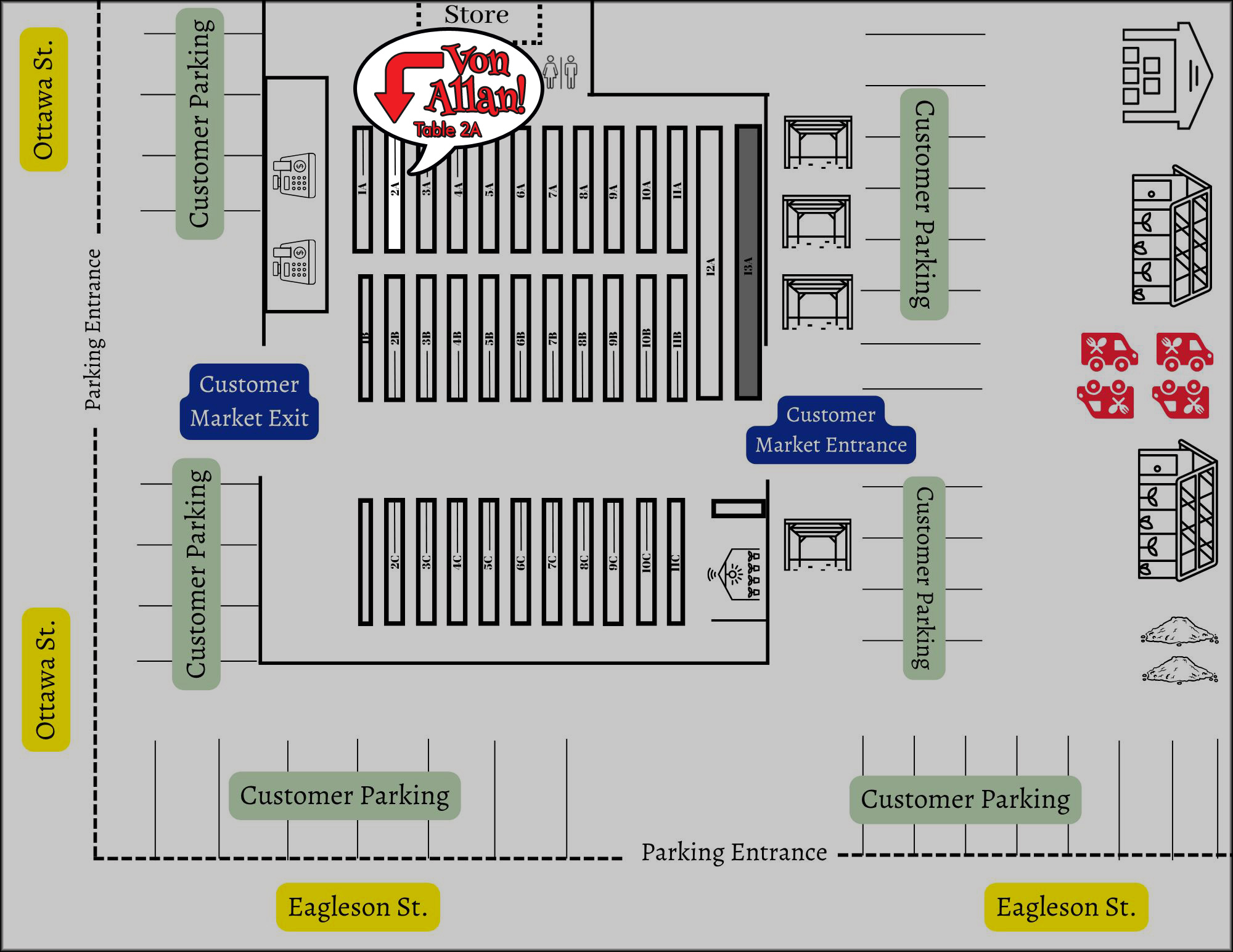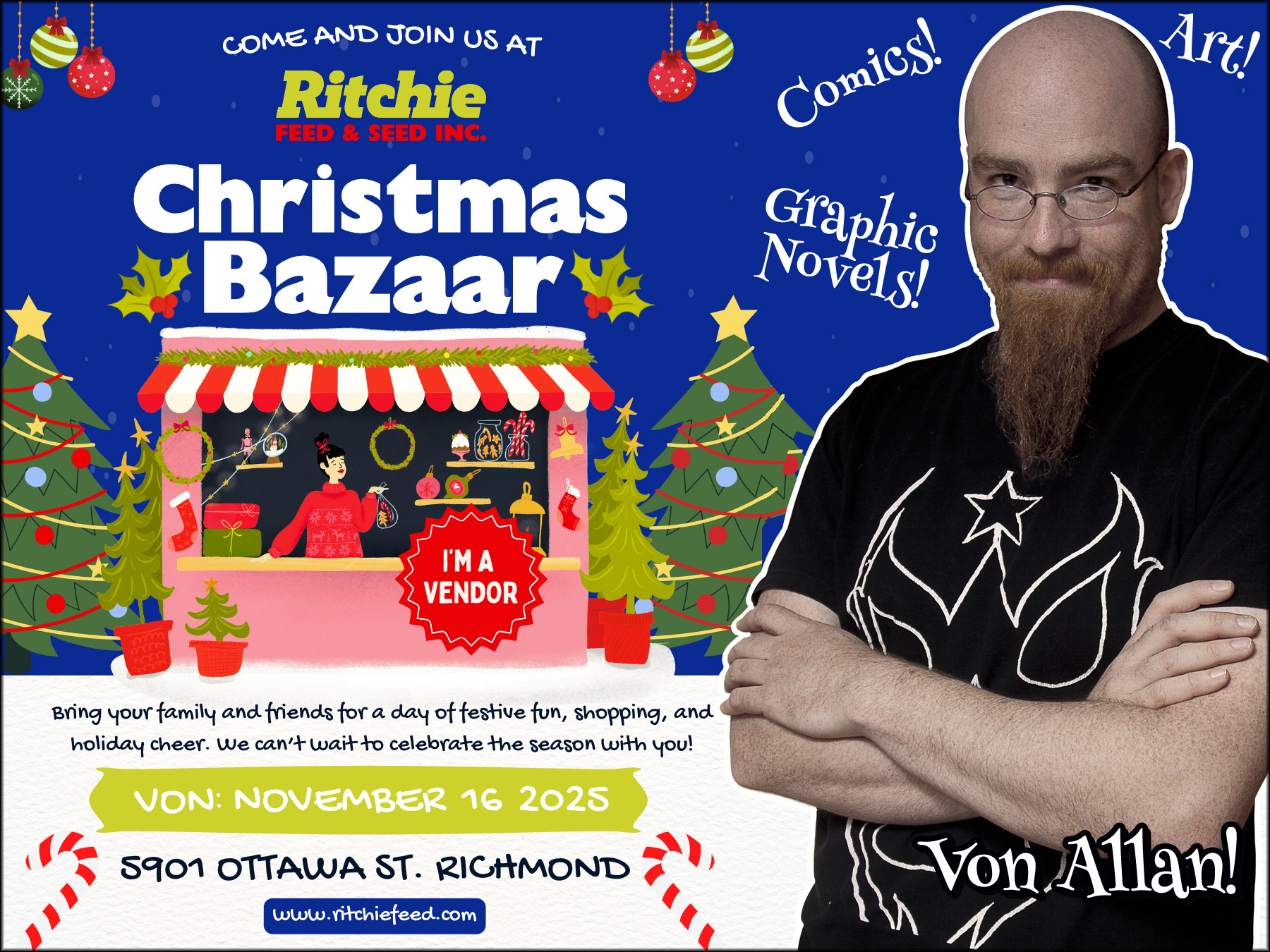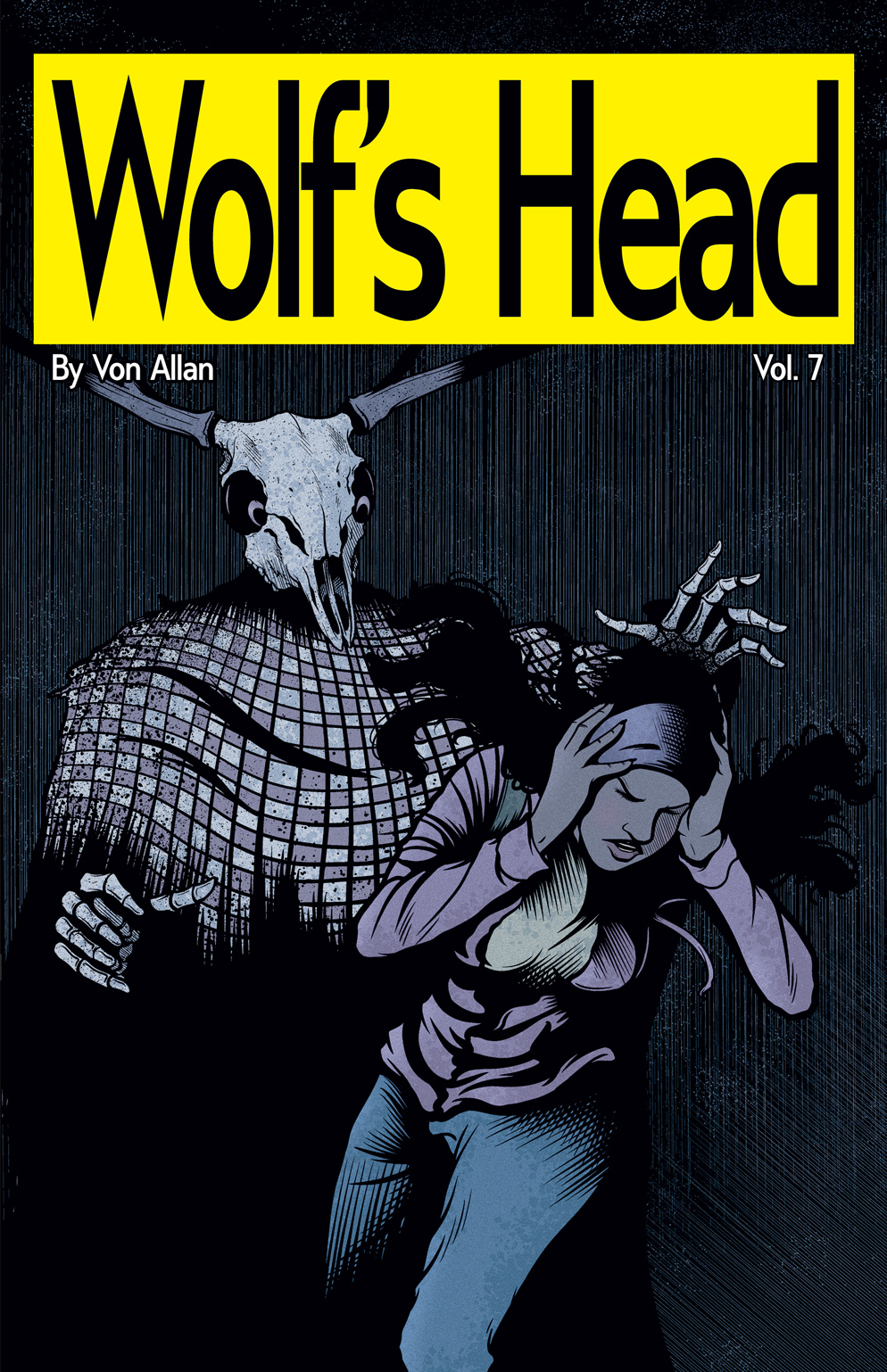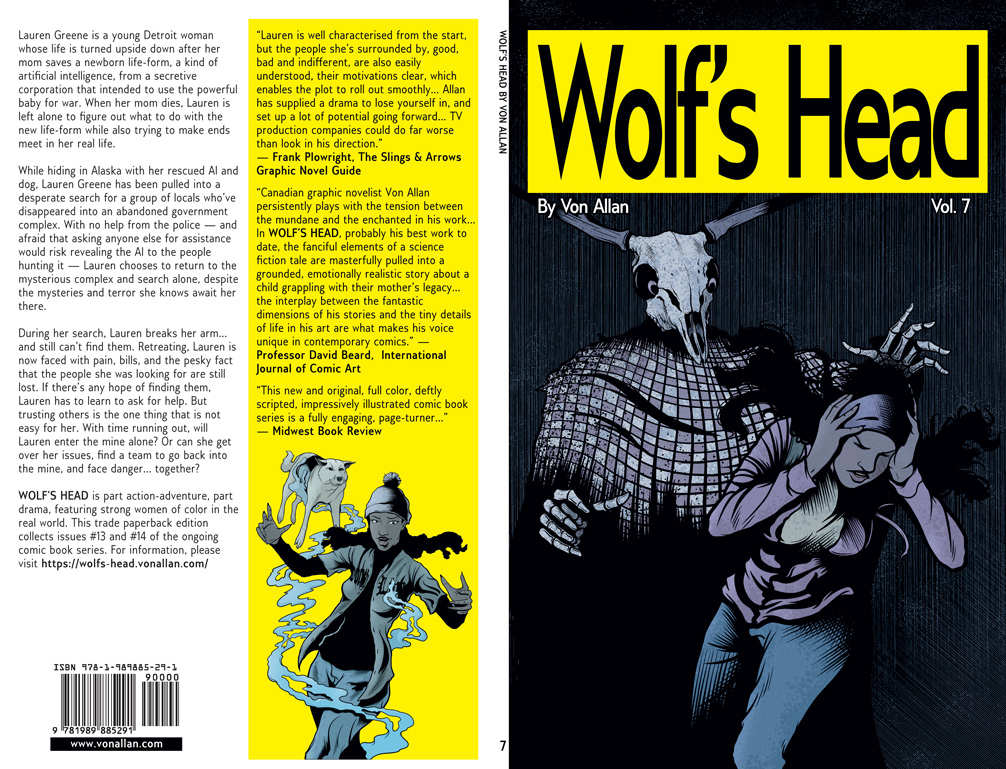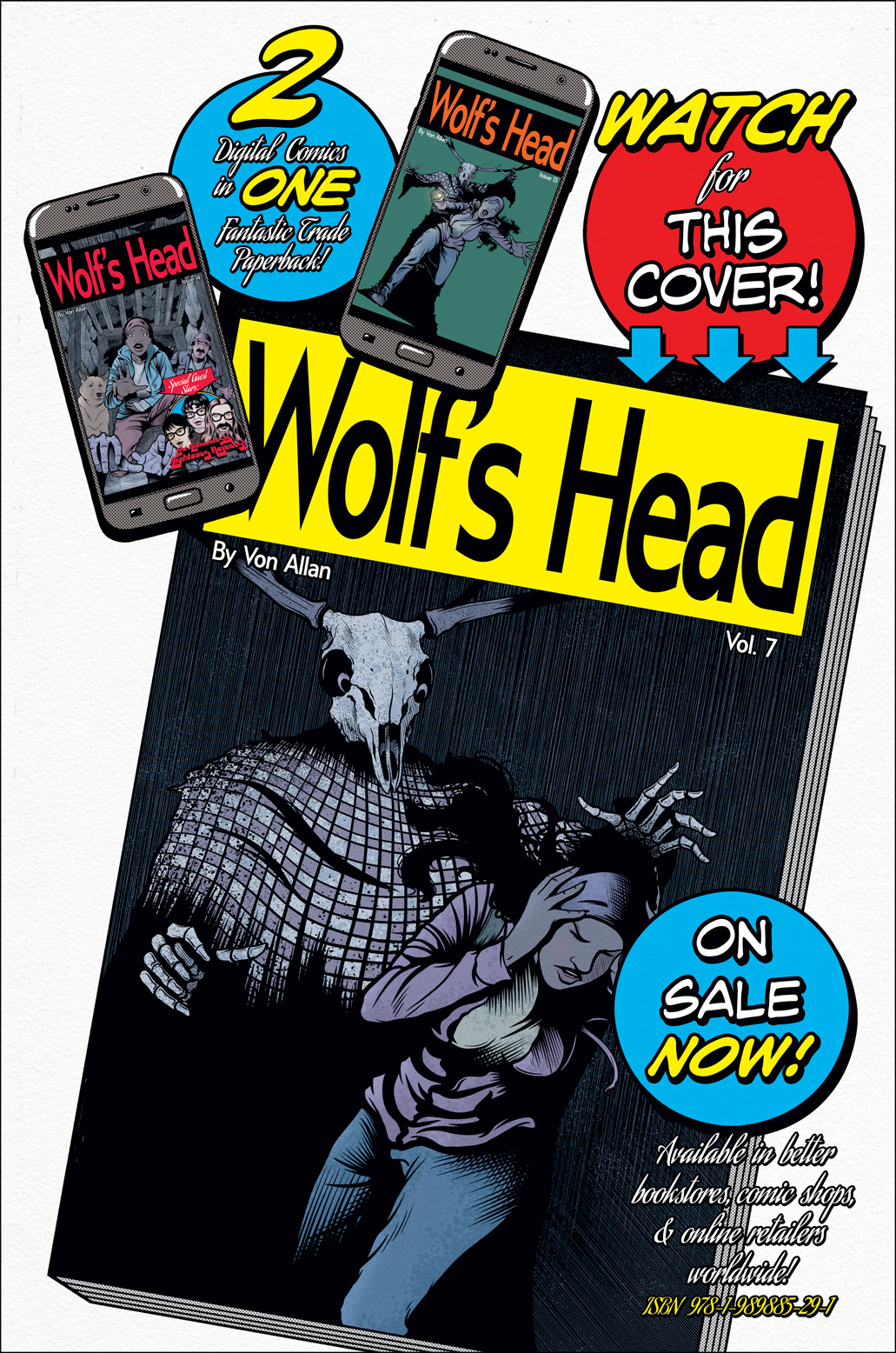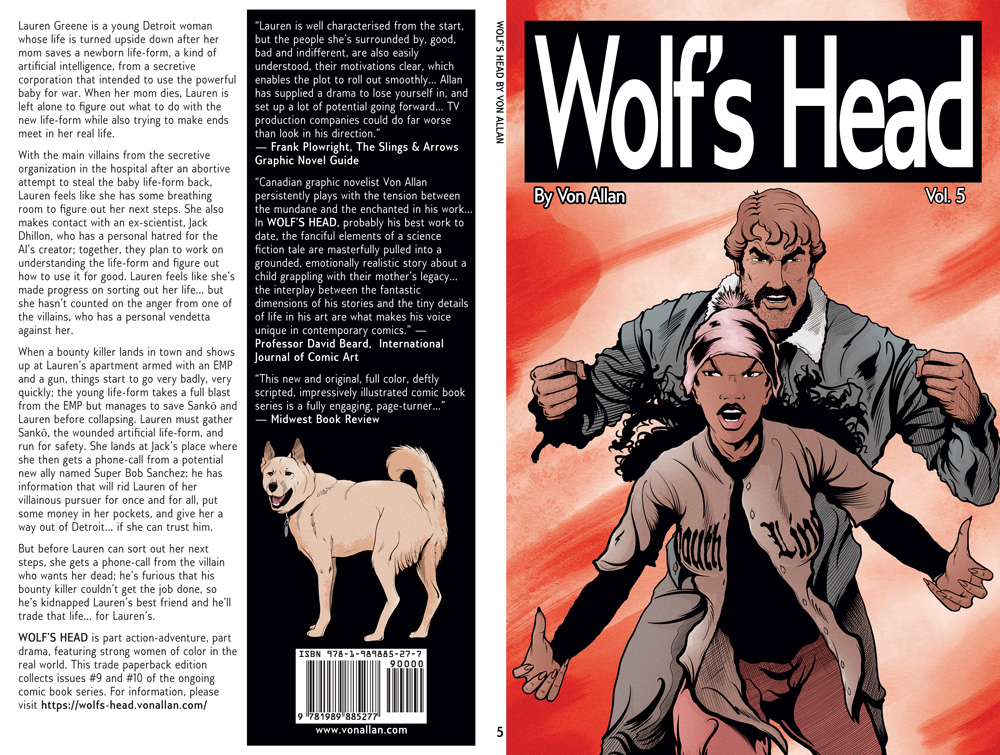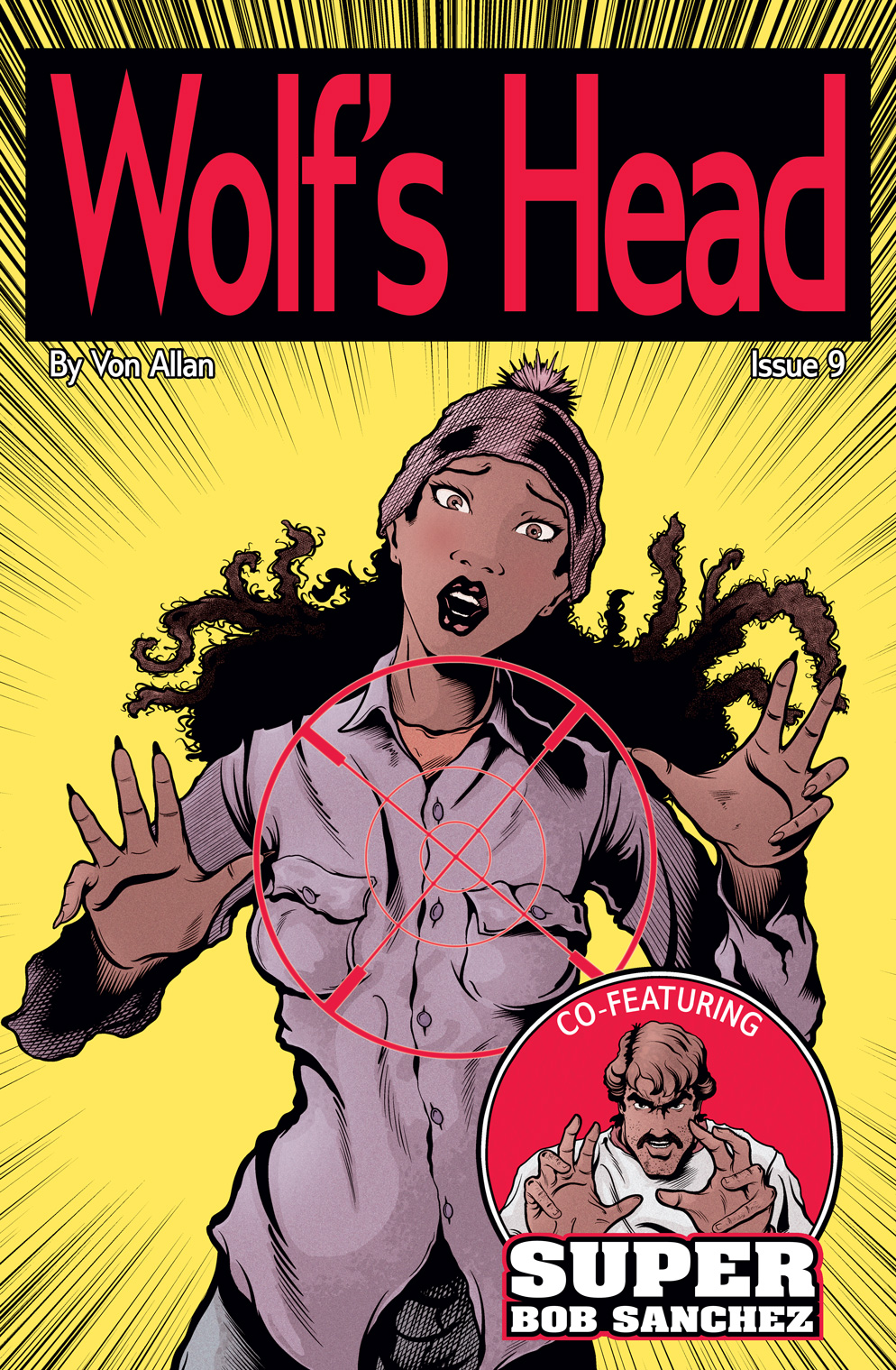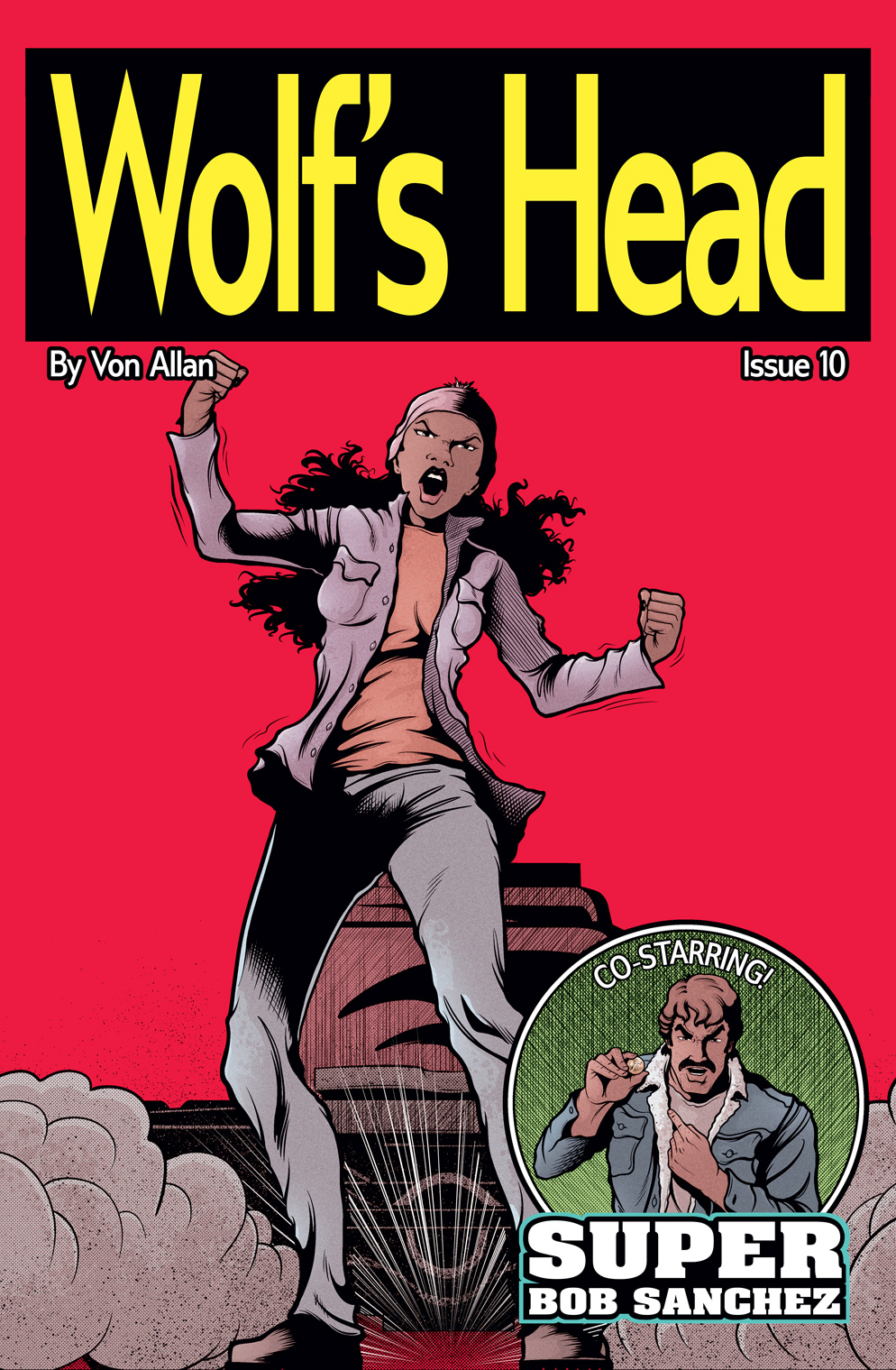Wolf’s Head Volume 8 in trade paperback format Worldwide (first-time ever)!
This a milestone! Due to more challenges than I can shake a stick at,1 the long-awaited Volume 8 of WOLF’S HEAD is now finally available! This volume features one of the most emotional twists I’ve done in the series so far, but one I think makes perfect sense.
As I previously noted, the first seven WOLF’S HEAD trade paperbacks are back in print in new editions, but with today’s release of Volume 8 (collecting issues 15 and 16 of the ongoing digital series) we are on brand new ground! As always, this is a full colour edition and is 60 pages in length. Haunted by loss, Lauren Greene and her loyal dog Sankō embark on a perilous road trip from Alaska to Detroit, outwitting ruthless corporate agents to protect a sentient AI child. Hunted at every turn, Lauren risks everything to keep the extraordinary life-form from becoming a weapon—and to safeguard the future of a new kind of intelligence.
- Amazon.com
- Amazon.ca
- Canadian Independent Bookstores (via BookManager)
- Amazon.co.uk
- Barnes & Noble
- Bookshop.org (and IndieBound)
- And on and on! Germany? You bet! What about Waterstones? Definitely! Again, you may need to ask your local bookstore and comic shop, but it is easily available everywhere!
As always, remember that I can’t control exactly when and where this volume will become available, but hopefully the above links are a good start. Be patient and don’t be afraid to ask your retailer for help! Volume 9 will be released shortly, either at the tail-end of 2025 or early 2026.
There is a dedicated website for WOLF’S HEAD at https://wolfs-head.vonallan.com/p/wolfs-head-landing-page.html with all kinds of additional information!
The Elevator Pitch
Lauren Greene’s world is turned upside down when her mother rescues a newborn artificial intelligence from the powerful and secretive Advanced Research Projects Corporation (ARPC) — a shadowy organization determined to weaponize the sentient life-form. After her mother’s sudden death, Lauren is left alone, struggling to survive and protect the extraordinary AI now in her care.
Desperate to escape ARPC’s relentless pursuit, Lauren flees her home of Detroit and disappears into the wilds of Alaska with her loyal dog, Sankō, and the young and vulnerable AI. She soon realizes, however, that running away won’t solve her problems. Determined to take control of her fate, Lauren sets out on a perilous road trip back to Detroit, hoping to find a way to secure the AI’s safety once and for all.
On the long journey home, Lauren and her companions are relentlessly hunted by ARPC agents, forcing her to risk everything to keep the AI from becoming a weapon. Outmatched and outnumbered, Lauren must summon all her courage, outwit her pursuers, and teach her unlikely companion what it means to fight for survival. If she fails, she risks losing not just her own life, but the future of a new kind of intelligence.
The WOLF'S HEAD Trade Paperback Series
Below is a listing of all the volumes of the series so far! If you click on the cover, it will bring you to a dedicated page for that volume on the WOLF’S HEAD subdomain. Again, most online retailers regularly stock and carry WOLF'S HEAD. However, occassionaly there are hiccups with this from time to time (typically because the retailer has had a little rush on sales!). So, if you were shopping on Amazon (for example) and discovered that a particular volume is out of stock, there are many alternatives. These include Barnes & Noble, Bookshop.org, Indigo, McNally Robinson, The American Book Center, Waterstones, and so on.Read for Free
As many of you know, I’ve also begun serializing the comic book series for free on the Internet Archive (https://www.archive.org) as part of my “Pirate Von” initiative. As I mentioned above, WOLF’S HEAD Volume 8 consists of issues 15 and 16 of the ongoing series. While you can find the links to both on the Internet Archive as well as the “Pirate Von” section of this very website, to make it easier the links to both issues 15 and 16 are below.Remember! If you enjoy them and would like a physical copy, you can purchase Volume 8 in stores — both online and off — around the world!
TEASER FOR WOLF’S HEAD Volume 8
And here’s a little teaser image to help cement the idea. Two digital comics inside one trade paperback volume!Other Links
- Overview of my Comics: http://www.vonallan.com/p/comics.html
- Wolf’s Head (My Ongoing Comic Book Series): https://wolfs-head.vonallan.com/p/wolfs-head-landing-page.html
- Von Allan Studio Shop Page: http://www.vonallan.com/p/von-allan-studio-shop.html
- RSS Feed: http://feeds.feedburner.com/Von_Allan_Homepage
- An explanation for why you never saw WOLF’S HEAD in Diamond's PREVIEWS: https://www.vonallan.com/2025/01/Diamond-Comic-Distributors-Wolfs-Head-and-Me.html
1 But what the hell! Let’s enumerate! Here goes: The pandemic (well, duh), Diamond Comic Distributors and their intransigence, Amazon’s decision to end ComiXology as a separate platform, rolling it into Kindle platform instead, the death of a dear beloved friend, health scares from other loved ones (and family drama), the utter collapse of Diamond and the resulting upheavels in the so-called Direct Market, Ingram Content Group’s apparent difficulties with “EDI” or Electronic Data Interchange and various retailers, not to mention the normal day-to-day challenges of life. Whew!
Von Allan at the Vanier Artisans Christmas Market
In what has become a Christmas tradition, I’ll be one of the artists at the Vanier Artisans 2025 Christmas Market! For those in the know, I’ve been doing these for the past number of years and they are always a tremendous experience with a diverse group of artists and craftspeople. And since I live in the community (Vanier Strong!) and I also did the art for the poster, I can honestly say it’s my favourite market of the year.
This is the first time that we’re doing the event at a new venue! St. Margaret’s Anglican Church was kind enough to collaborate with the Vanier Artisans and host the event this year. It’s a truly lovely venue, in the heart of Vanier, and will have a nice Christmas vibe to it. It was actually built way back in 1887, so it’s architectural design is pretty unique. And it’s in a great location, at the corner of Montreal Road and Cody Avenue on a major bus route and with easy access to parking in the back.
As the City of Ottawa notes on it’s website, “The cornerstone of this solid limestone heritage building lined with brick, often described as Vanier’s oldest building, was laid by Lady Agnes Macdonald, wife of Sir John A., in 1887. Its belltower is in the old English style. Initially a mission of St. Bartholomew’s Church in New Edinburgh, it functioned as a “chapel-of-ease” on the main dirt road from Ottawa to Montreal, in an area that became the community of Janeville. By 1915, it began providing regular services in English to its membership of mostly poor immigrant families.”
As always, I’ll have everything on my “shop” page, so that includes a full compliment of WOLF’S HEAD graphic novels, plus other comics and graphic novels (including SHEBA THE GREAT!, LOVE, LAUGHTER, AND LOSS: A COMICS COLLECTION, and STARGAZER), as well as Christmas cards, art prints, and so on! Some photos are at the end of this post!
Here are the details! A formal press release is at the end of this post, too!
Date: November 29, 2025Public washrooms
Accessible access
Free parking
Metered/paid parking
Family friendly
OC Transpo nearby
Here are some Photos of What I’ll Have Available!
And there will be a few surprises, too!
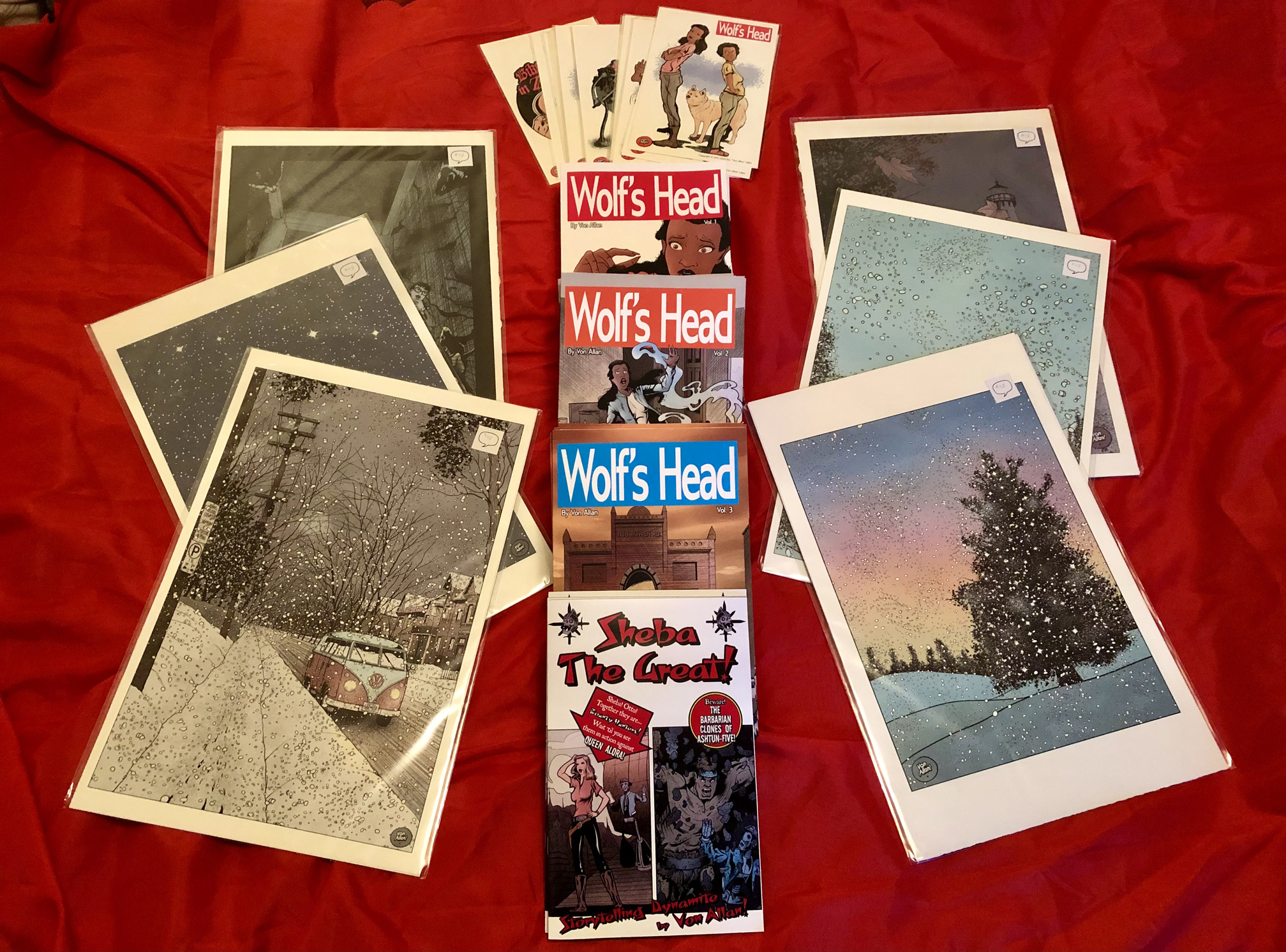


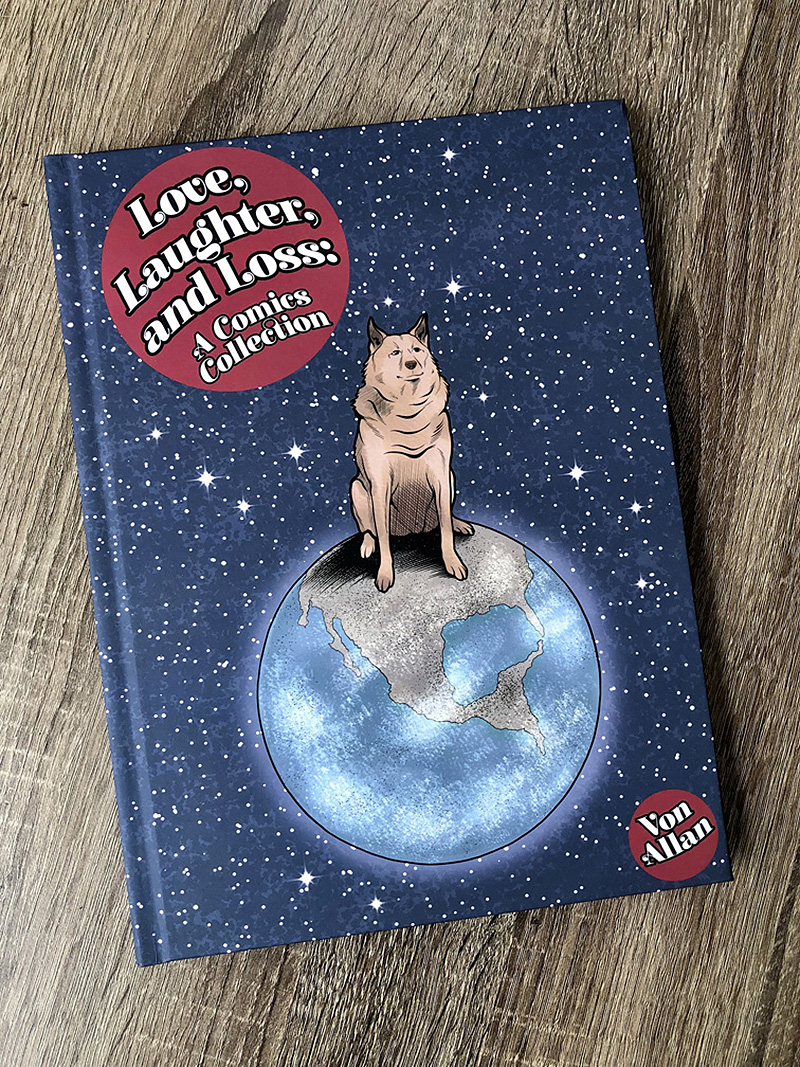
Press Release
FOR IMMEDIATE RELEASE
Shop Local, Give Handmade: The Vanier Artisans Christmas Market Returns in a New Festive Space!
Ottawa, Ontario – November 25, 2025 — The holiday spirit is shining brighter than ever in Vanier. This year’s Vanier Artisans Christmas Market returns with fresh energy, a stunning new venue, and a warm invitation to shop local and bring home something truly special.
Now hosted at St. Margaret’s Anglican Church (206 Montreal Road), this community favorite Christmas Market celebrates local talent and craftsmanship. Each purchase directly supports Ottawa’s makers and helps keep Vanier’s creative traditions thriving.
Organized by Charlotte Taylor and a passionate team of volunteers, the market features an exciting range of handcrafted goods, from preserves, candles, soap, and baked treats to art and photography prints, knitted and crocheted items, jewelry, and comics and graphic novels. Many items are made in small batches, so visitors are encouraged to shop early and secure their favorites before they’re gone.
“We’re so excited about our new home at St. Margaret’s,” shared organizer Charlotte Taylor. “It’s the perfect place to bring people together to celebrate the season and support our local artists. Every purchase makes a difference and keeps creativity alive in our community.”
Event Details
Date: Saturday, November 29, 2025
Time: 3:00- 8:00pm
Location: St. Margaret’s Anglican Church, 206 Montreal Road, Vanier, ON K1L 6C9
Admission: Free
Questions: VanierArtisans@gmail.com or https://www.facebook.com/share/1D4EKgjH6d/
About the Vanier Artisans Christmas Market
The Vanier Artisans Christmas Market is a cherished, community led event that showcases the heart and talent of Ottawa’s local makers. It’s a celebration of community, creativity, and the joy of giving handmade, one meaningful gift at a time.
Von Allan at the Square Lemon Winter Wonders Craft Market in Ottawa
Hot on the heels of the Ritchie’s Feed & Seed Christmas Bazaar, I’ll be one of the exhibitors at this year’s Square Lemon Winter Wonders Market! Last week I was in Richmond, Ontario and this week I’ll be in The Glebe, in the heart of downtown Ottawa! This Market will be held at the Glebe Community Centre, a really neat venue that started off as a church (the St. James Methodist Church) before being converted into a community centre in the mid-1970s (I think! I included a nice 2005 photo so you can get a sense of the exterior). It’s gorgeous inside and makes for a lovely experience, both for vendors like myself as well as for attendees. In other words, I think everyone will have a great time!
It’s actually going to be a smidgen odd for me. Why? Well, I actually grew up in this neighbourhood and attended various local schools (including Mutchmor Public School, Glashan Public School (junior high school), and then Glebe Collegiate Institute (high school for your normal folks out there!). My mom sure as hell could not afford to live in the Glebe, so we were “Glebe adjacent.” I walked by the Glebe Community Centre pretty regularly as a kid, but I haven’t been in the neighbourhood since my friend Dave died. He lived only a few blocks away. It will be bittersweet experience to say the least, but hopefully a very positive one.
What will I be selling? Well, a full compliment of WOLF’S HEAD graphic novels, plus other comics and graphic novels (including SHEBA THE GREAT!, LOVE, LAUGHTER, AND LOSS: A COMICS COLLECTION, and STARGAZER), as well as Christmas cards, art prints, and so on! Some photos are at the end of this post!
Here are all the details!
Date: November 23, 2025
Time: 10:30 AM to 3:00 PM
Location: The Glebe Community Centre, 175 Third Ave, Ottawa, Ontario K1S 2K2
Cost: Free admission (donations to Square Lemon are welcome)!
Vendors: Over 50!
Facebook: Square Lemon Ottawa Facebook Page
Glebe Community Centre (GCC) Visitor Tips:
The event is held on the second floor, up a set of stairs. There is an accessible elevator for those who need it. Volunteers are also available to help you.
WIFI is not available on site for use during the event.
Bathrooms are available for both vendors and attendees.
The GCC is accessible including disabled parking spots, an elevator (to be used mainly for people with mobility restrictions) and accessible washrooms.
If you require any assistance during the event feel free to ask a volunteer and they will try their best to accommodate your needs.
Here are some Photos of What I’ll Have Available!
And there will be a few surprises, too!




The Glebe Community Centre

Von Allan at the 2025 Ritchie Feed & Seed Christmas Bazaar
I am one of the vendors participating in this year’s Christmas Bazaar, hosted by Ritchie Feed & Seed, in Richmond, Ontario, just south of Ottawa proper but still part of the National Capital Region. This is a pretty neat event; Ritchie’s converts a greenhouse into a Christmas-themed venue and that allows well over one hundred artisans to showcase their work for the holiday season. It’s a great opportunity to support local artists (like me!) and find some awesome presents, too.
Now, while the event is over TWO days (Saturday November 15th and Sunday November 16th), I’ll only be there for ONE day (Sunday).
What will I be selling? Well, a full compliment of WOLF’S HEAD graphic novels, plus other comics and graphic novels (including SHEBA THE GREAT!, LOVE, LAUGHTER, AND LOSS: A COMICS COLLECTION, and STARGAZER), Christmas cards, art prints, and so on!
Over on Instagram, Ritchie’s has put up a “reel” of last year’s event. If you’d like to get a sense of what it looks like, take a peek at https://www.instagram.com/ritchiefeedinc/reel/DCh8ZcHRZhq/
Here are all the details!
Date: November 16, 2025 (Von Allan only; remember that the full show is on November 15th and 16th)
Time: 10:00 AM to 3:00 PM
Location: 5901 Ottawa St., Richmond, ON, K0A 2Z0
Cost: Free admission!
Facebook: The Christmas Bazaar Event Page
Visitor Tips:
Space inside is limited — no carts or buggies
Strollers & wheelchairs welcome (main aisle only)
Bring reusable bags (and small bills for cash vendors!)
The greenhouse is heated, so dress in layers
Map of the Venue: I’m at Table 2A, sharing it with Enchanted Crochet Creations and Lynne McHardy (unfortunately I can’t spot their website). To help further, here is a map of the venue!
Other Links
- Overview of my Comics: http://www.vonallan.com/p/comics.html
- Wolf’s Head (My Ongoing Comic Book Series): https://wolfs-head.vonallan.com/
- Von Allan Studio Shop Page: http://www.vonallan.com/p/von-allan-studio-shop.html
- RSS Feed: http://feeds.feedburner.com/Von_Allan_Homepage
Wolf’s Head Volume 7 in trade paperback format Worldwide!
As I previously noted, the WOLF’S HEAD trade paperbacks are back in print in brand new editions! Next up is today’s release of Volume 7, collecting issues 13 and 14 of the ongoing digital series. This is a full colour series and is 60 pages in length. Volume 6 saw the series relocate to Alaska, as our heroine Lauren Greene made a decision to move from Michigan in an effort to keep her loved ones safe. As she continues to navigate her new life and situation, she discovers that not everything is quite what it seems. Especially her!
This is also the last of the revamped original trade paperbacks. The next volume (volume 8) have never been in print before! NEVER!
Volume 7, as well as all of the other volumes in this series, are available in better bookstores and comic shops worldwide (and for why I say “better,” please read this commentary). Volume 7’s ISBN is 978-1-989885-29-1. If you don’t see it at your local store, then you can easily order it using that ISBN. Additionally, it is already starting to show up at various online retailers, too. For example:
As always, remember that I can’t control exactly when and where this volume will become available, but hopefully the above links are a good start. Be patient and don’t be afraid to ask your retailer for help! Volume 7 will be released shortly, with subsequent volumes appearing throughout 2025.
There is a dedicated website for WOLF’S HEAD at https://wolfs-head.vonallan.com/p/wolfs-head-landing-page.html with all kinds of additional information!
The Elevator Pitch
Lauren Greene’s world shatters when her mother dies saving a mysterious newborn AI from a secretive corporation intent on turning it into a weapon. Alone and on the run, Lauren escapes to the wilds of Alaska, struggling to protect the powerful life-form — and herself — while barely scraping by. But when a group of locals vanishes inside an abandoned government complex, Lauren is thrust into a high-stakes search that threatens to expose her secret. With the police unwilling to help and danger lurking in the shadows, Lauren faces a terrifying choice: risk everything by asking for help, or brave the haunted corridors alone, knowing that discovery could mean losing the AI forever. As injuries mount and time slips away, Lauren must confront her deepest fears and learn to trust others before it’s too late. Will she find the missing before the secret she’s guarding is revealed or will the darkness inside the complex claim them all?
Read for Free
As many of you know, I’ve also begun serializing the comic book series for free on the Internet Archive (https://www.archive.org) as part of my “Pirate Von” initiative. As I mentioned above, WOLF’S HEAD Volume 7 consists of issues 13 and 14 of the ongoing series. While you can find the links to both on the Internet Archive as well as the “Pirate Von” section of this very website, to make it easier the links to both issues 13 and 14 are below.Remember! If you enjoy them and would like a physical copy, you can purchase Volume 7 in stores — both online and off — around the world!
TEASER FOR WOLF’S HEAD VOLUME 7
And here’s a little teaser image to help cement the idea. Two digital comics inside one trade paperback volume!Other Links
- Overview of my Comics: http://www.vonallan.com/p/comics.html
- Wolf’s Head (My Ongoing Comic Book Series): https://wolfs-head.vonallan.com/
- Von Allan Studio Shop Page: http://www.vonallan.com/p/von-allan-studio-shop.html
- RSS Feed: http://feeds.feedburner.com/Von_Allan_Homepage
- An explanation for why you never saw WOLF’S HEAD in Diamond's PREVIEWS: https://www.vonallan.com/2025/01/Diamond-Comic-Distributors-Wolfs-Head-and-Me.html
Cosmo Talks to Graphic Artist Von Allan About Drawing and Storytelling
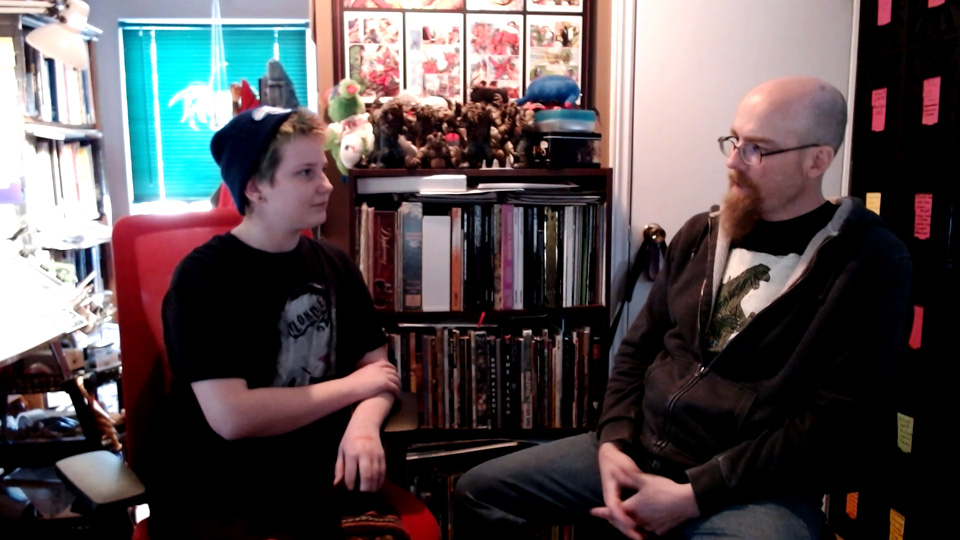
In February 2023 my niece Cosmo asked to do an interview with me for a school project. We chatted for about 25 minutes and Cosmo had a number of really good questions. I’ve been wanting to share the interview for quite a while, but since Cosmo is technically a minor it makes it a smidgen tricky to post the full video. But! Why not post a transcript of the interview instead, with a few screen shots to go with it? Yeah! What follows, then, is a lightly-edited transcript of our interview where we talk about my journey creating comics and graphic novels.
It was a lot of fun to do, especially when Cosmo asked me a pointed question about the “fellas” who watch over me in my studio! You’ll have to read the piece below to know exactly what I mean, but I wasn’t expecting a question like that!
The Interview
Cosmo: Hello and welcome to my interview with Von Allan. He is a graphic artist and also my uncle. Hello.
Von Allan: Hi!
Cosmo: Today I will be asking questions about your career and possibly other things.
Von Allan: Okay. I will do my best to give you good answers.
Cosmo: Okay. So… Question one. How did you start making comics and graphic novels?
Von Allan: Well, I’m a little bit weirder — or my situation is a bit weirder — than a lot of people. Because a lot of times you will hear interviews with artists and they are saying things like, ‘oh, I drew from the time I was two years old, and that’s what I did.’ I was not that guy. I did draw when I was a kid, but I didn’t draw [after that]. I didn’t have a lot of self-confidence when I was a teenager. I was pretty confident about one thing and that was I would not be able to draw. I didn’t know how to draw and I would never learn to draw.
So I wound up working at a bookstore in my early twenties, and what was really neat about that experience was I met a lot of artists and — primarily — a lot of writers. And I talked with them. And I started to realize that being an artist of any stripe, broadly speaking — not just a visual artist but a writer or what have you — you’re not hit by a magic wand when you’re born and you have these skills and everybody else doesn’t. I learned that it’s work, it’s practice. You struggle, you’re going to fail, and you get stronger as you go.
So, I always liked comics. I was really into comics when I was young. And I was kind of frustrated at the bookstore because I wasn’t paid very well. And I decided that, ‘hey, maybe I can learn to do this.’ And I literally started drawing with a book called “DRAWING ON THE RIGHT SIDE OF THE BRAIN” by a wonderful writer named Betty Edwards. And I started to teach myself to draw.
Cosmo: Interesting. Shall we move on to the next question?
Von Allan: Yeah.
Cosmo: Okay. Question two. Who or what really inspired you to make what comics you have?
Von Allan: Well, this is tricky because I think a lot of times what style is and what we’re inspired to do is sort of almost subconscious. Like it’s in the back of our heads, not in the foreground. But there were a lot of artists I liked. As I learned to draw, and as I was struggling to learn to draw, I was learning a lot about visual storytelling. And one of the things I started to realize was that some of the stuff I liked when I was a kid followed — I don’t want to say ‘rules’ because I don’t feel like there’s a lot of rules to art — but certainly used kind of ‘tools’ that made me like [these] comics. And I started to like their stuff more so than other people’s stuff.
I started to explore that a bit. ‘Why? Why do I like story “X” versus story “Y” even though a lot of people like story “Y”? I’m not so crazy about it.’ By trial and error and by learning, I started figuring out my own approaches to doing it. And I could rattle off artists that I like and what have you, but it was more an approach to what inspired me. An approach to comics, an approach to how panels work — the gutter space between panels, why that’s important. And I started kind of experimenting with my own stories, typically short stories, and started figuring stuff out.
And I mean, part of the thing is you never stop learning. So I’m learning to this day about what works — or what I think works — what doesn’t work and why I think it doesn’t work. And the learning and the inspiration never stops. I still find stuff I really like, brand new stuff to this day. And that’s part of the fun of doing art and being an artist.
Cosmo: Hmm. That sounds good. Okay, next question. Can you tell us about one of your graphic novels?
Von Allan: Yeah, well, I’ll say the most recent one because it’s the one I put a lot of time into. It’s a story called “WOLF’S HEAD.” And it’s — I never know quite how to describe it — it’s set in the real world, in our time. It stars a young woman named Lauren who is trying to figure out what to do with her life. She’s in her early 20s and she’s living in Detroit. And she winds up, through her mom, making a sort of a stupendous discovery of this sort of sentient artificial intelligence. And it’s really young; it’s basically like a baby. So it has a personality and it’s also trying to discover its way in the world. And she becomes friends with it and she starts helping it. And through helping it and trying to protect it, she’s learning more about herself and having a number of adventures as the story goes on.
So I’m 18 issues now in, it’s been done in a few different forms. But I’m starting to put them out in hardcover. So the first hardcover, collecting the first six issues, came out a little while ago. And I’m just starting to get ready to put the second one together. So yeah, I’ve been working on that for like five years now.
Cosmo: I will feature that in the video when I edit it.
Von Allan: Okay.
Cosmo: Question five. How exactly did you teach yourself to draw?
Von Allan: Through a lot of trial and error. A LOT of trial and error. I’m not kidding. I sat down and I didn’t know how to draw at all. I could barely make a straight line. I didn’t know anything about anatomy or storytelling or what have you. And I started with a book, like I said, “DRAWING ON THE RIGHT SIDE OF THE BRAIN.” And I… The problem with that book is that it’s really good at teaching you to draw what you see. But it’s much harder, particularly with comics, to try to figure out what’s in your head and get that down on paper, as well. The ways that comics versus other forms of visual art work.
So there was so much trial and error. And I looked at… There are people, particularly with the internet, people that talk openly about comics creation. There were people I liked. So I wound up kind of looking at other people’s work to sort of try and learn. Honestly, one of the best people was a guy named Jim Shooter, who was the Editor-in-Chief at Marvel Comics decades ago. But he is a really… He’s a writer, not an [active] visual artist. But he worked with a lot of visual artists. So he spoke a lot about why certain things work in comics, why other things don’t work in comics, and things to think about.
So that helped on the comics front, and then [I did] a lot of my own experiments. And then, for things like anatomy, you start with anatomy books. And you go to lifedrawing. I did a little bit of lifedrawing classes at the Ottawa School of Art. And I just, slowly but surely, made my way.
You have to be open to try things, even if things will take you down blind alleys. So I did a lot with watercolours. I did a lot with brush and ink, black ink, to sort of figure out ways of approaching things. I tried different tools that sometimes didn’t work so great. And you learn by doing. You learn by failing. And you have to really keep an open mind with this stuff. And you kind of muddle your way through. So it was not overnight. Oh boy, it was not overnight. But you do get stronger at it.
Cosmo: Yeah, like, I’ve been drawing since I was four years old.
Von Allan: Yeah! I never did that. I stopped. So, I’m jealous.
Cosmo: But I taught myself more than when I was younger.
Von Allan: Yeah, absolutely.
Cosmo: So, next question. When did you decide — how old were you when you decided you wanted to make comics and graphic novels?
Von Allan: I was around 26. So, I was a lot older than a lot of people are. But I mean, one of the things that’s really neat about anything creative — visual art, writing, acting, anything — is unlike something like athletics, there’s no age limits to it. Often times with athletes, particularly professional athletes, there’s a “window” of time where you get into your 30s, particularly your mid-30s and older. And it’s much harder. It’s much harder physically to be able to do it. But art — anybody can do art from the time you’re a little kid to the time you’re really old. And there’s no age restrictions. I mean, there might be something physically wrong, like a disease or some type of limitation. But for the most part, people can make art right to the day they die. And that’s one of the things that’s really neat about art, because there’s no restrictions.
Cosmo: Next question. How long does it take to make a full graphic novel?
Von Allan: So long. So long. It’s hard to talk specifically about an individual graphic novel because it depends on how many pages are in it and what happens. So broadly speaking, what I try to do is pencil and hopefully ink and letter a page a day. I don’t always hit that. So that means I’ve already had to come up with a script and story before that. And that is even harder to kind of pin down.
If I have an idea in my head and I’m building on a previous story… So with Lauren and “WOLF’S HEAD”, because it’s an ongoing and I’m doing them sequentially as comics first, digital comics first. The stories are about 18 to 20 pages long, give or take. So… It takes about a week to write one to the point where I have the dialogue in place, which is the key thing. For me, the [number of] panels, the page count, and the dialogue is the key stuff. So, once I have that, I’ll actually start laying it out — typically digitally — and then I’ll start drawing it. And I work a combination of digital, as you know, and then some traditional stuff with pencil and paper. And if I’m… if things are going well, it’s about a page a day.
So for an individual comic, that’s about 18 to 20 pages. We’re looking at a month. A while. Yeah. And then if it’s a six-issue collection, then it’s six or seven months of work to put out a six-issue collection. Yep. So it’s not for the faint of heart because it is a slow process. And that’s not even getting into things where you screw up or you make mistakes and you have to start over. Which does sometimes happen, too.
Cosmo: Who are some of your favourite characters?
Von Allan: Well, I really like Lauren in “WOLF’S HEAD”. And I’ve done… because I’ve done some different stand-alone graphic novels before that and some short stories and whatnot, it really ranges. Like there’s two wizards, a guy and a dog that I really like. Both are wizards, Bill and Butch, that I have a lot of affection for.
The first graphic novel I ever did was called “the road to god knows…”And that was sort of a fictional autobiography because the main character is female. But aside from that, she’s very much me. And her name was Marie. And that was very much about me growing up with my mom who was diagnosed with schizophrenia when I was very young and some of the experiences I had. I wanted to go fiction for a variety of reasons, but mainly to give myself a bit of distance from the real stuff I had been dealing with when I was a kid. But yeah, so Marie is a character I really, really like.
And there’s so many. I mean, it’s... what’s weird about storytelling is so many of the characters are aspects of me. Even if they’re not… like Marie is probably the closest to me as a character I’ve ever deliberately set out to write. But, you know, Bill and Butch are humorous stories. They’re kind of like comedy sci-fi. And they have a lot of my smart-ass sense. There’s a lot of smart-ass attitude in them. And even some of the more stand-alone stories I’ve done in the past, there’s all aspects of me in them. So I like them all. There’s no character I’ve ever written where I’m like, ‘ew, I screwed that up or whatever. I don’t like that character.’ I mean, there’s antagonists, like the bad guys that are not people I would ever want to hang around with. But they all still come from me. And they had story purposes for being in there. That’s part of the fun.
Cosmo: And for the next question, it’s kind of a follow-up to that question. How exactly do you create a character?
Von Allan: Well, it’s tricky. It usually starts with… Typically… how do I say this? Again, it’s tools, not rules. But what I try to do is I have a protagonist. So in the case of “WOLF’S HEAD”, it’s Lauren. And I always try to figure out what does she want to accomplish in this story? So what is she trying to do? What are her goals? And then I start trying to figure out obstacles to those goals. And then I [determine] what Lauren does to try to get around those obstacles. So the obstacles can be internal; like she’s scared of something or she’s angry about something. But they can also be external; [for example] where she doesn’t have enough money. She needs a new car or something like that. And when you create obstacles like that, you give your main character opportunities to take action to overcome them. You wind up having a really active character, a really active protagonist. They’re not just reacting, they’re trying to do stuff.
So when it comes to building Lauren, I initially was figuring out what I wanted “WOLF’S HEAD” to be about even before I knew who the characters were going to be. So I knew I wanted it to have a positive portrayal of artificial intelligence, because usually a lot of movies, if you think “TERMINATOR” or what have you, a lot of movies will have scary evil computers that are trying to kill you or take over the world or whatever. And I wanted to be like, ‘no, I wanted to have a benevolent computer that actually likes humanity and is a baby and is trying to learn and is screwing up.’ And then I started to figure out what type of… I knew I wanted it to be in the real world, because I like real world stories, particularly for this story, and there were reasons for that. And then I started figuring out the characters, and that took a while.
Initially, the AI in “WOLF’S HEAD” is actually found by Lauren’s mom. And I sort of wound up working backwards. Lauren’s mom is a woman named Patty, and Patty was working at this sort of computer complex and encountered the AI. So I worked backwards to figure out more about who Patty was and then realized, ‘hey, she has a daughter’ and who the daughter is. And then actually, as I kept working on that, Lauren became the main character.
And the antagonists are kind of similar. I tend to view them as… it’s going to sound weird, but I tend to view them as dragons. The heroes are dragon-slayers and the villains are dragons. So… the antagonists are dragons. So you have your dragon-slayer good guy, Lauren, and then you start building up some of these antagonists to give her external obstacles and challenges. So right away, it was ‘who created the AI?’ ‘What did they want to do with the AI?’ It turns out they were negative. They were trying to make it an AI meant for war. And the AI rebelled against that.
So it’s a lot of questions. Particularly if you’re trying to figure out… how do you build a character that is sincere and believable and real? You wind up trying to figure out who these people are as if you were meeting somebody in real life for the first time. You ask questions and you sort of go through this process. And it’s a lot of fun. It’s a lot of work. And it’s slow. That’s the big thing: it’s slow. Because it’s the hardest part of writing. For me, anyway, it’s not so much writing a script or whatever; it’s getting a handle on who the characters are. Figuring out narrative ways you can go with them. And do different stories with them. And trying to avoid dead ends. Where you’re like, ‘I can’t do anything more with this character. I’m stuck.’ And that’s about the closest I’ve ever come to anything like writer’s block is where you’re kind of like, or I’m kind of like, ‘I don’t know how to resolve this problem with this character.’ So maybe I should just stop and do something else. Or go in a different direction.
Sorry, long-winded answer. But that’s the hardest thing about writing. It’s trying to get a handle on a character and figuring out who they are.
Cosmo: And now for a final silly question. What are those?
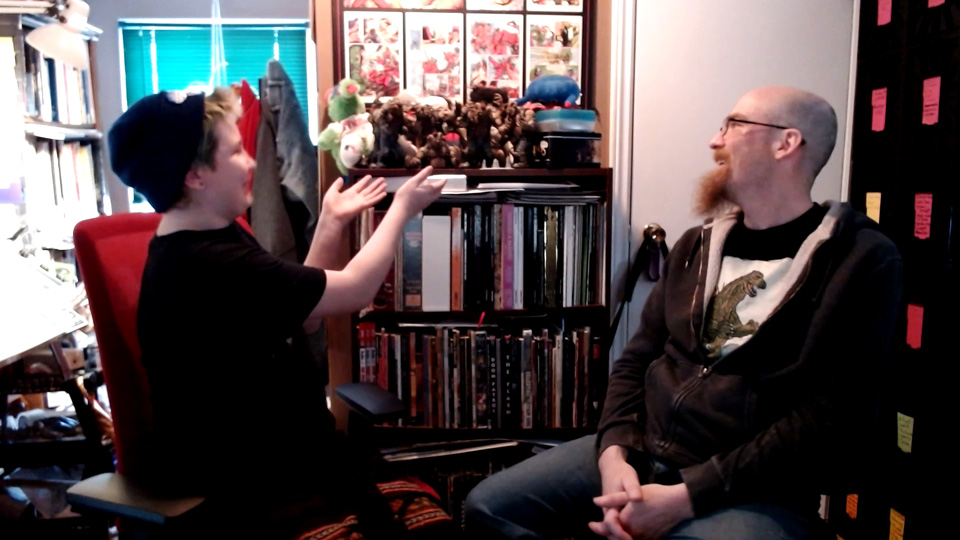
Von Allan: These are my biker trolls! I fell in love with these guys. They were a toy line done years ago. And it was not popular. And I love them. They’re my biker trolls. They were actually for a game. It was a miniature game called SHADOWRUN DUELS. “SHADOWRUN” was actually a role-playing game. And they span out. And they were trying to… A lot of figures for war-gaming and stuff like that are 28mm. They’re very small. And they were...I can’t remember the name of the company doing it. But “SHADOWRUN” anyway, and the gaming company they were working with, were trying to do bigger [figures], sort of merging action figures with 28mm wargaming. With rules and dice and stuff.
And I love them. I just love them. And I’ve got one unopened one. So there you go. Like he’s a big biker troll. He’s called Wolf Nev. And at some point, when I’m in the mood, I will open it up. But these are not easy to get now. So I was like. ‘I’ll keep one… Open up most of them. And I’ll keep one back.’ Because I love them. So you can see the dice that comes with him. And all the extra stuff. So yeah. Yeah. Anyway. Very good question. Because they are always in my studio. And I look at them and I smile. So there you go.
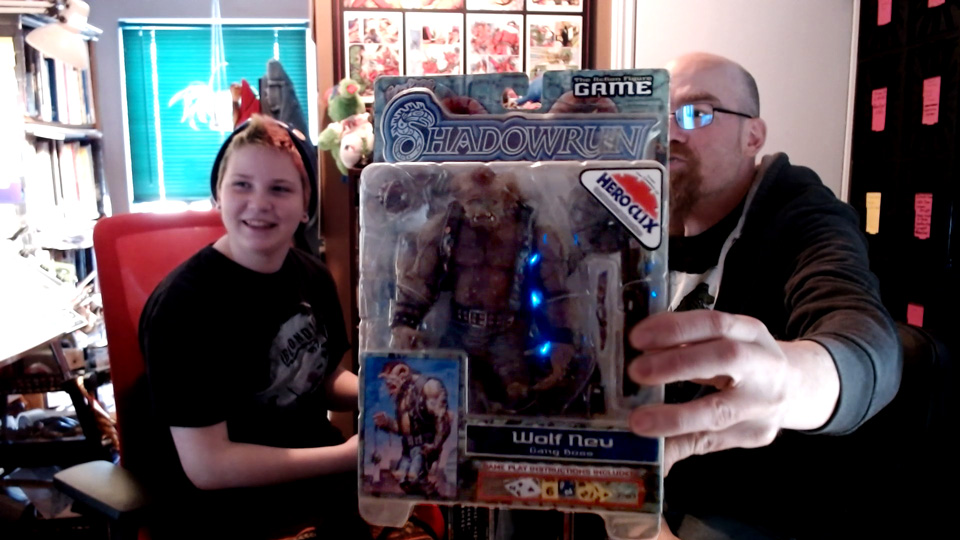
Cosmo: Thank you. I hope I had interesting questions.
Von Allan: Yeah!
Wolf’s Head Volume 5 in trade paperback format Worldwide!
As I previously noted, the WOLF’S HEAD trade paperbacks are back in print in brand new editions! Today features the release of Volume 5, collecting issues 9 and 10 of the ongoing digital series. This is a full colour series and is 60 pages in length. This is also one of my favourite volumes of the series so far!
As always with my work, these are available in better bookstores and comic shops worldwide (and for why I say “better,” please read this commentary). Volume 5’s ISBN is 978-1-989885-27-7. If you don’t see it at your local store, then you can easily order it using that ISBN. Additionally, it is already starting to show up at various online retailers, too. For example:
Please remember that I can’t control exactly when and where this volume will become available, but hopefully the above links are a good start. Be patient and don’t be afraid to ask your retailer for help! Volume 6 will be released shortly, with subsequent volumes appearing throughout 2025.
And, of course, there is a dedicated website for WOLF’S HEAD at https://wolfs-head.vonallan.com/p/wolfs-head-landing-page.html with all kinds of additional information!
The Elevator Pitch
When grieving Detroit native Lauren Greene becomes guardian to a childlike AI—engineered for war but who hates violence and loves humanity—a vengeful ex-operative, defying his corporate masters, kidnaps her best friend to draw her out. With the AI wounded and time running out, Lauren races to protect a fragile new hope for humanity.
This volume also introduces a new character, Super Bob Sanchez, a truck driver who is not (under any circumstance!) a hero.
Read for Free
As many of you know, I’ve also begun serializing the comic book series for free on the Internet Archive (https://www.archive.org) as part of my “Pirate Von” initiative. As I mentioned above, WOLF’S HEAD Volume 5 consists of issues 9 and 10 of the ongoing series. While you can find the links to both on the Internet Archive as well as the “Pirate Von” section of this very website, to make it easier the links to both issues 9 and 10 are below.Oh, and please remember! If you enjoy them and would like a physical copy, you can purchase Volume 5 in stores — both online and off — around the world!
TEASER FOR WOLF’S HEAD VOLUME 5
And here’s a little teaser image to help cement the idea. Two digital comics inside one trade paperback volume!Other Links
- Overview of my Comics: http://www.vonallan.com/p/comics.html
- Wolf’s Head (My Ongoing Comic Book Series): https://wolfs-head.vonallan.com/
- Von Allan Studio Shop Page: http://www.vonallan.com/p/von-allan-studio-shop.html
- RSS Feed: http://feeds.feedburner.com/Von_Allan_Homepage
- An explanation for why you never saw WOLF’S HEAD in PREVIEWS: https://www.vonallan.com/2025/01/Diamond-Comic-Distributors-Wolfs-Head-and-Me.html


